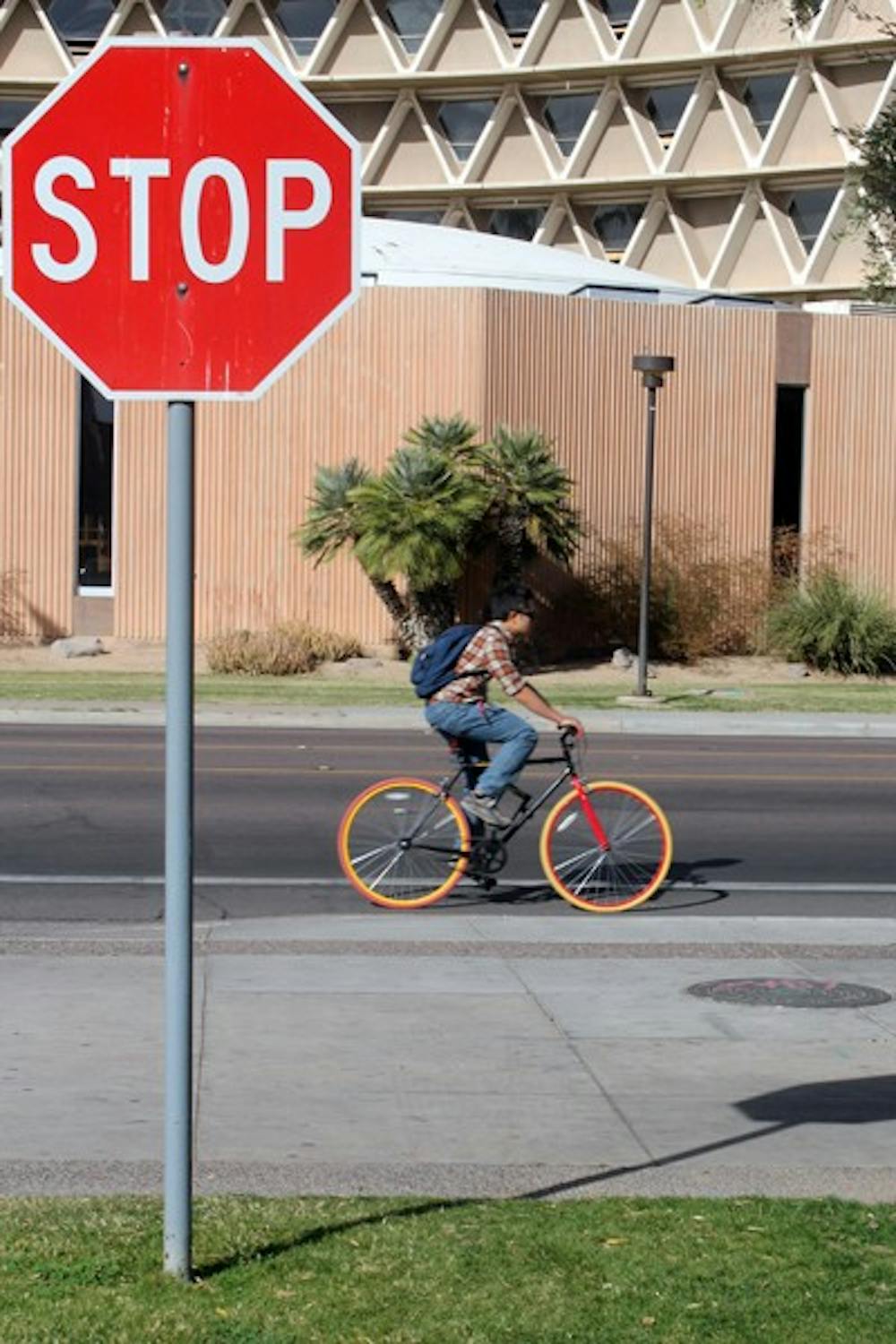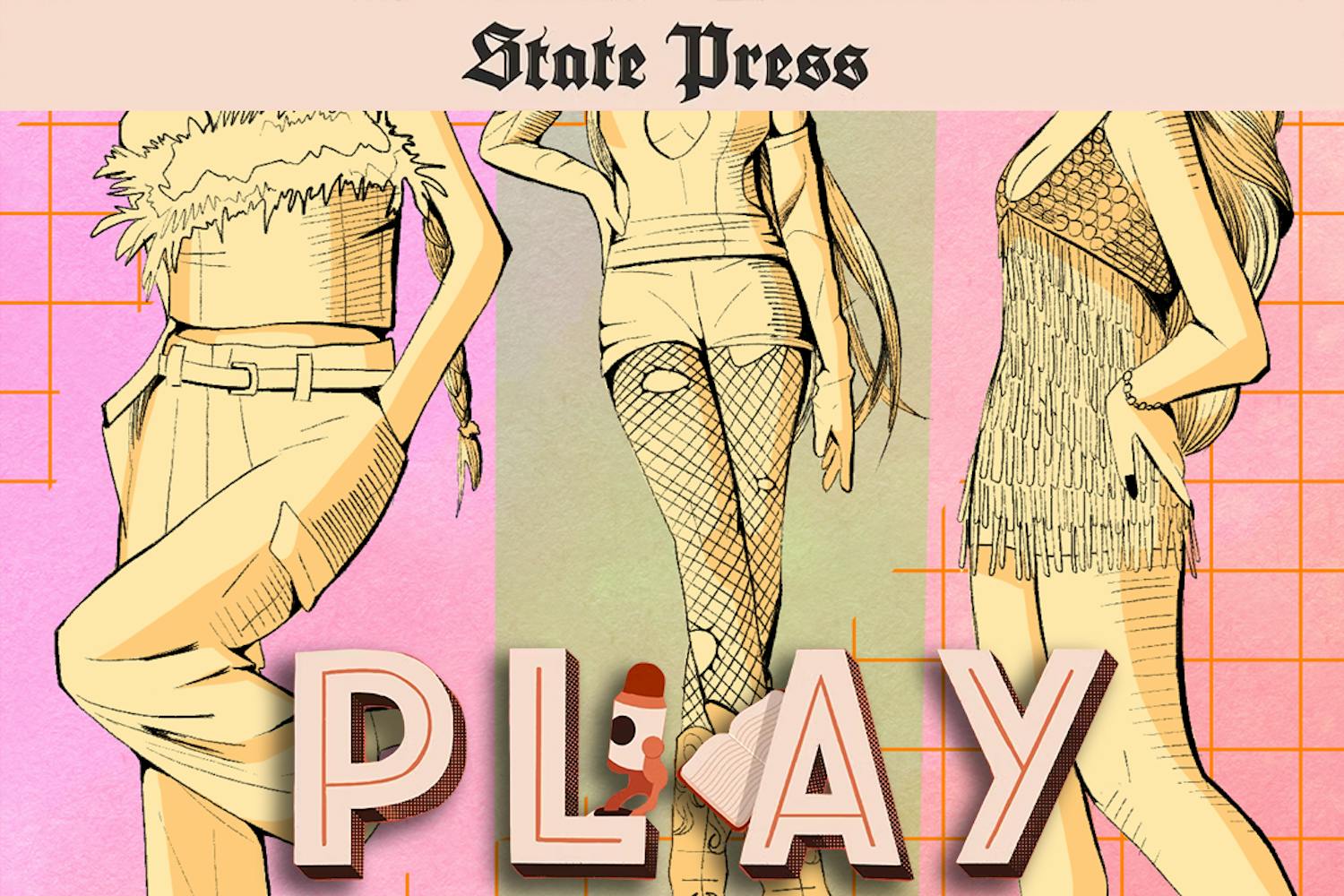 The House Transportation Committee passed House Bill 2211, which will allow
The House Transportation Committee passed House Bill 2211, which will allow bicyclists 16 and older to treat a stop sign as a yield sign. The bill still needs to be
passed by two other committees before reaching the House. (Photo by Adrian
Juarez)
Bicycles are an extremely important part of many ASU students’ lives. If you were one of many students who tried to make it to campus this morning in the record-breaking torrential downpour, perhaps you were reminded of this. Considering only 20 percent of our student body lives on campus, bicycles are for many students the only way of making it to class. Although Walk-Only Zones may have put a dent in the prominence of biking on ASU, two-wheel transportation remains one of the most effective ways of getting around.
We’re fortunate to make up an influential part of Tempe’s healthy bicycle community—one that, according to a recent AZCentral article, has a biking commuting rate of 4.2 percent, a 2013 Silver rating from the League of American Bicyclists and a city council that prioritizes multimodal transportation. We’re also lucky to be situated in an area that is becoming increasingly fond of alternative transportation with the Phoenix Metro Light Rail and Orbit bus system.
However, we’re not quite where we need to be, as detailed by AZCentral’s investigation into the dangers for bikers on Rural Road, which does not have a bike lane. As a consequence, Rural Road’s intersections with University Drive, Broadway Road and Southern Avenue have the most collisions of any roads in Tempe, according to the report.
A similar controversy surrounds Broadway Road, where there is a vocal contingent for the addition of a bike lane and the removal of an automobile lane to provide a more bike-friendly environment.
Burdensome as traffic may be, the biking infrastructure surrounding ASU campuses is of paramount concern. The major roads in ASU areas should be modified to aid the safety and convenience of the large pedestrian community that ASU harbors.
To draw from ASU’s 2006 Comprehensive Development Plan, ”Future improvements to the perimeter roads need to create a more pedestrian- and bicycle-friendly environment without sacrificing road capacity.”
In addition, “narrowing and reducing the number of lanes, providing parallel parking, and the implementation of bicycle lanes will calm the traffic and improve safety for pedestrians.”
However, the proper allocation of roads and bike lanes is a deceptively charged issue. There seems to be a perpetual contest between pedestrians, who often feel little concern on the streets, and automobile drivers, who are already concerned with the traffic of the Phoenix metro.
With urban residents becoming more and more enthusiastic about reducing motor transportation, it seems that pedestrians will soon be gaining ground in these struggles.
In fact, ASU’s Downtown campus has been seeing significant progression towards the idea of a city centered around the biker and pedestrian. The Phoenix Comprehensive Downtown Transportation Study, courtesy of Maricopa Association of Governments, has been instituted in order to evaluate the ways in which downtown meets the public’s desire for a safer, more pedestrian-friendly area. According to a Phoenix Business Journal article, “the city of Phoenix is spending $560,000 on street improvements, decorative sidewalks, new trees and pedestrian-friendly upgrades along First Street in downtown Phoenix. Last October saw the ribbon cutting of a new bike lane on Grand Avenue, a desperately needed addition.
However, the City of Phoenix’s Comprehensive Bicycle Master Plan lays out countless other areas that are in need of improvement. Tempe Bicycle Action Group also lays out a plethora of recommended road projects by Tempe campus. There is no room for stagnation when there is much left to be done.
Both Tempe and Downtown Phoenix have plans to launch bike-share programs, complete with GPS tracking, which reveals another promising step in the right direction.
The Valley has taken great measures in ensuring its future as a pedestrian-focused place, but more needs to be done in areas surrounding ASU. At the moment, the pedestrian infrastructure does not fully meet the community’s growing want for pedestrian safety and convenience. We encourage community leaders to keep pushing forward in satisfying this need.
Want to join the conversation? Send an email to opiniondesk.statepress@gmail.com. Keep letters under 300 words and be sure to include your university affiliation. Anonymity will not be granted.
Like The State Press on Facebook and follow @statepress on Twitter.




